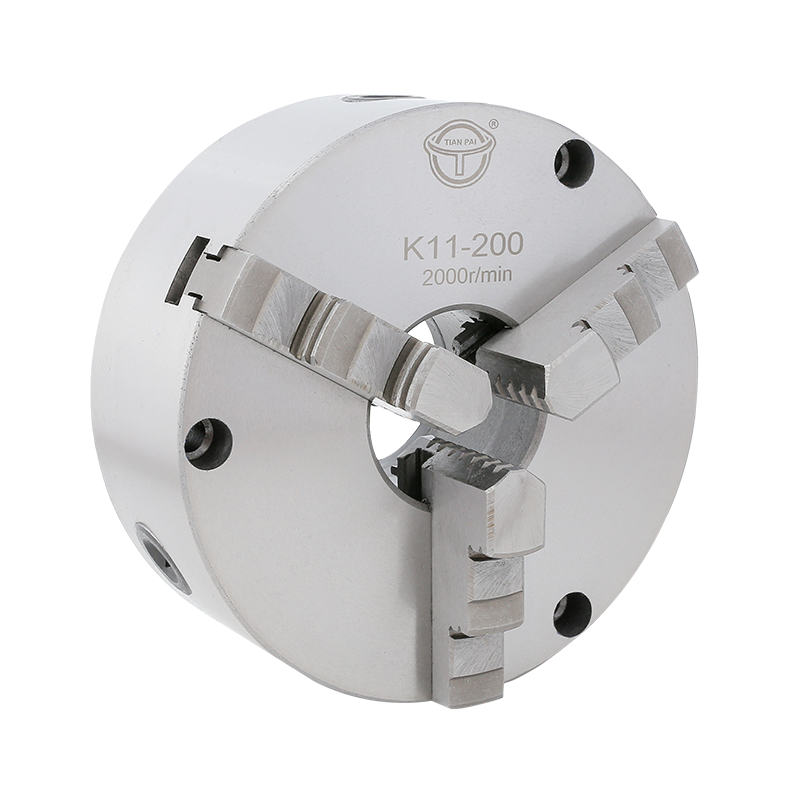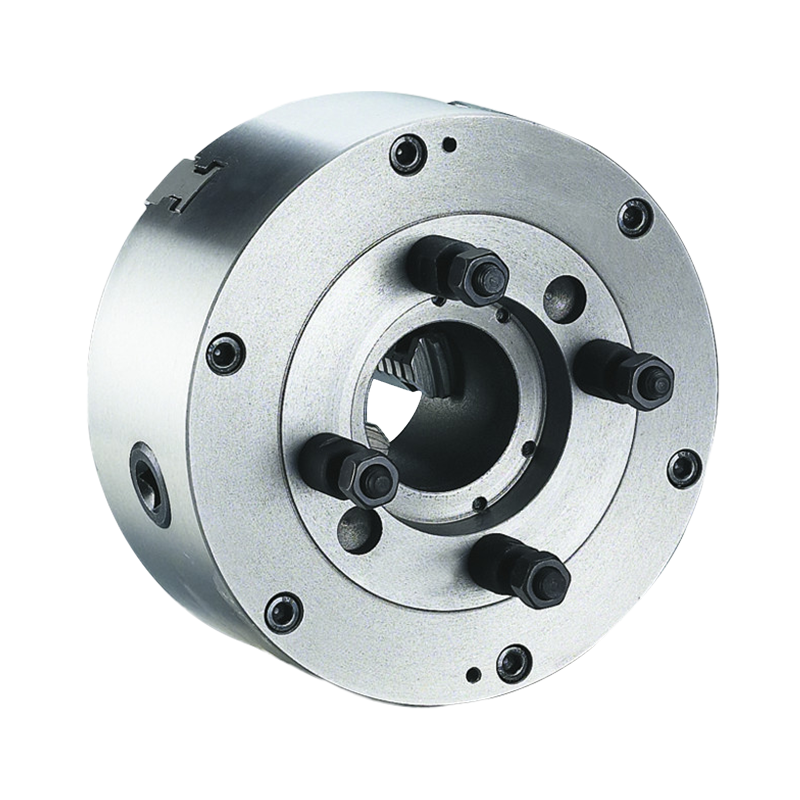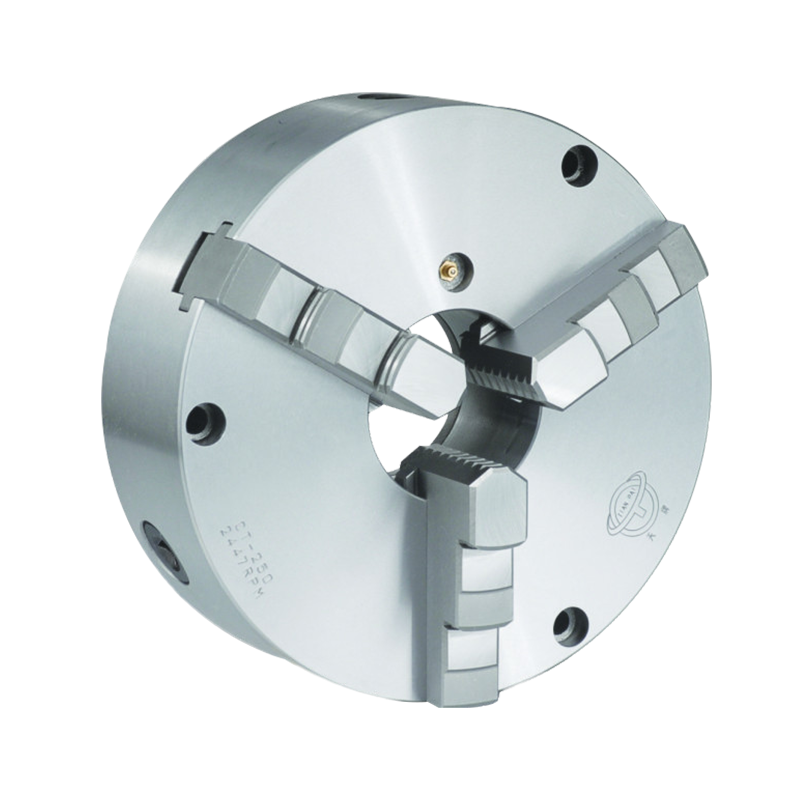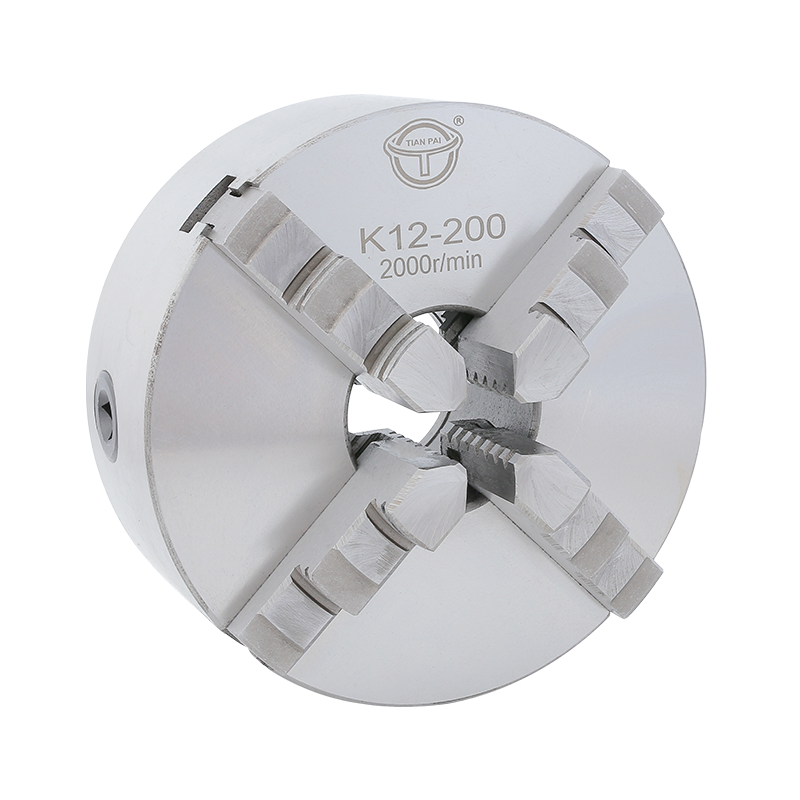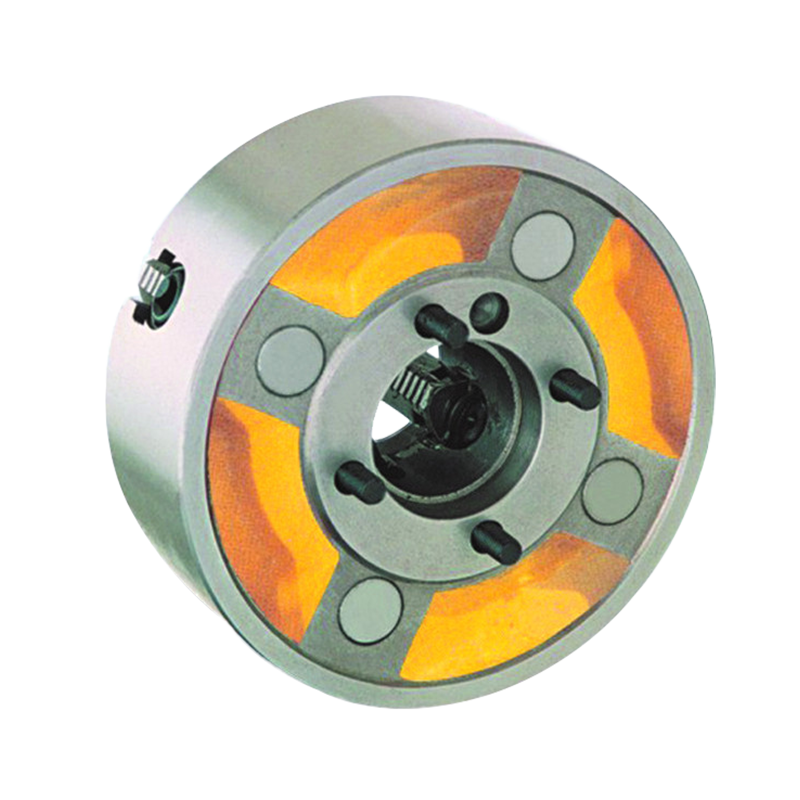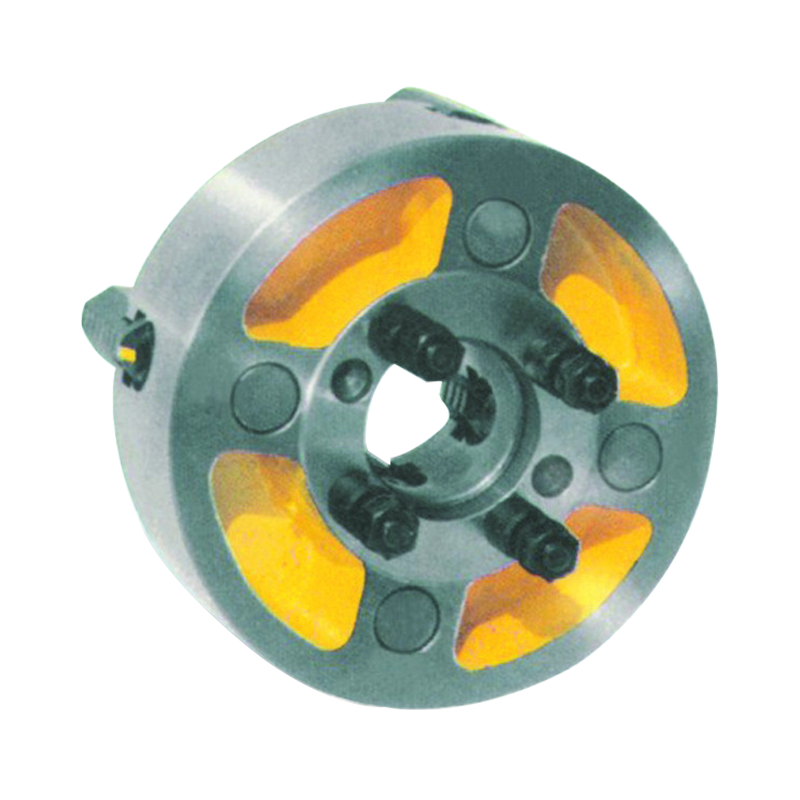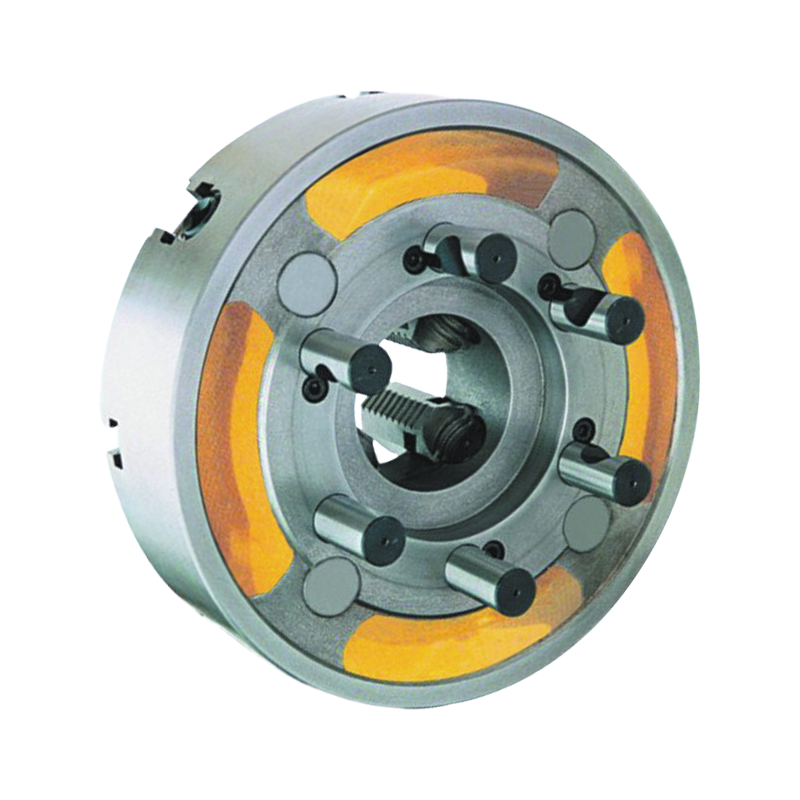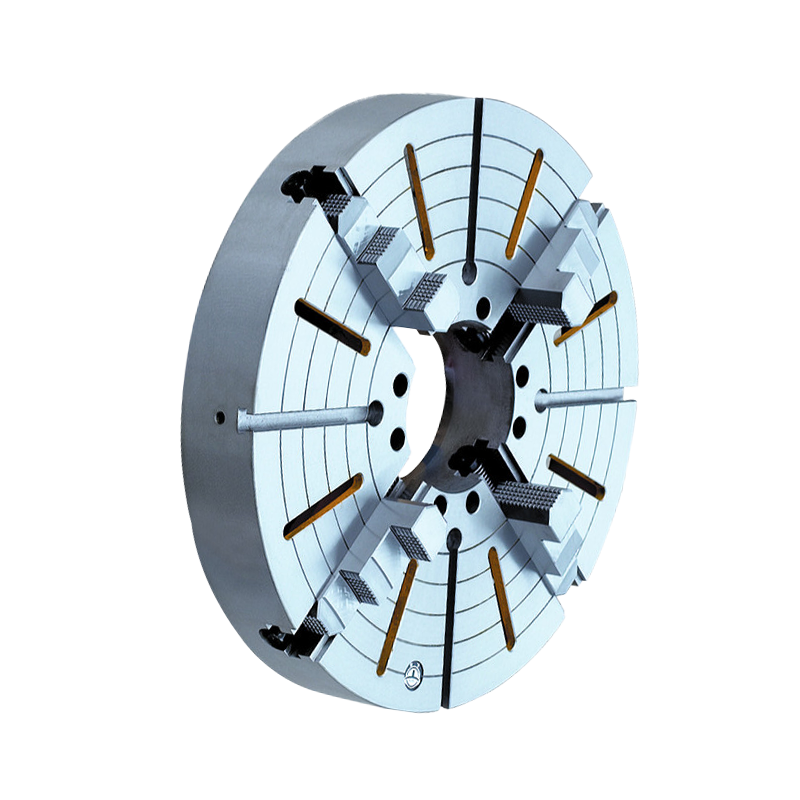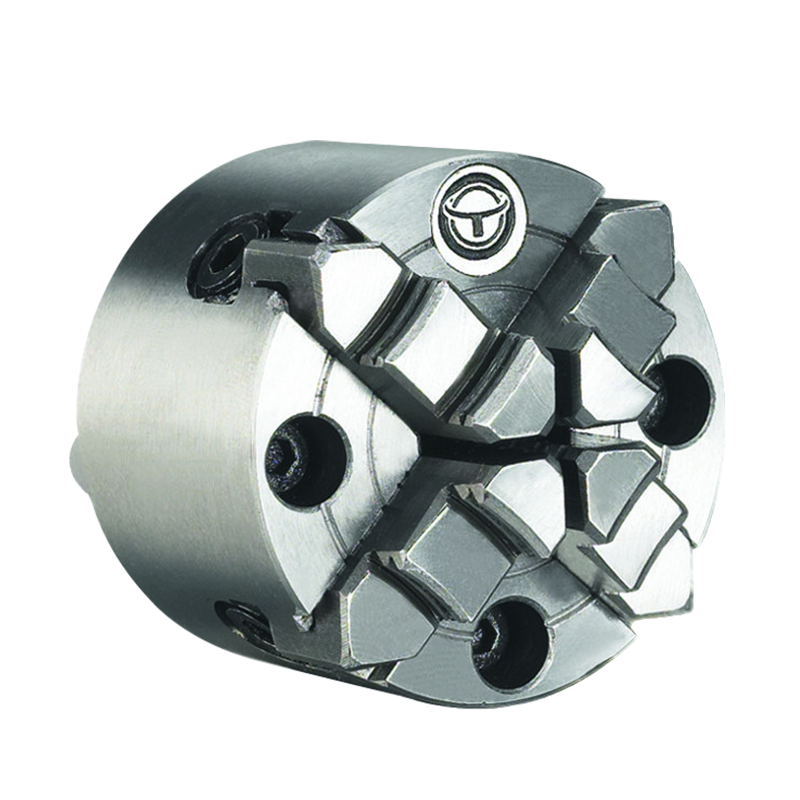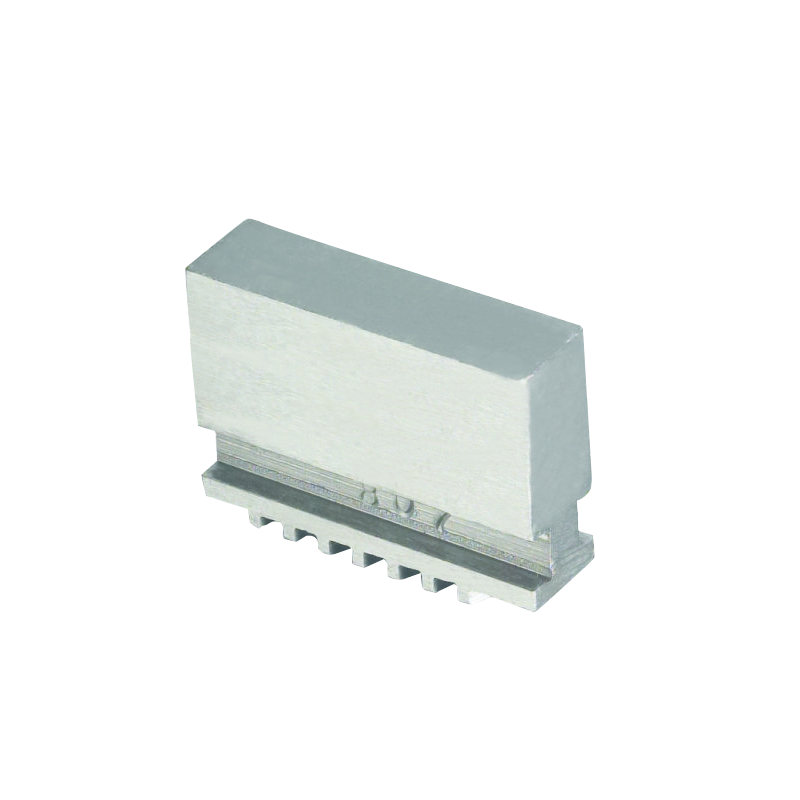Our company is a professional chuck manufacturer with more than 40 years of practical experience. In the manufacture of machine tool chucks, it has strong independent development capabilities and unique manufacturing and processing technical strength.
Supply Self Centering Chuck Manufacturers Exporters in China
Among these innovations, self-centering chucks stand out as versatile and indispensable tools for workpiece clamping.
Self-centering chucks are mechanical devices designed to securely hold and center workpieces during machining operations. Unlike traditional chucks that require manual adjustment, self-centering chucks automatically align and clamp workpieces with precision. They typically feature movable jaws arranged concentrically around a central axis. When actuated, these jaws move simultaneously towards the center, exerting uniform pressure on the workpiece for accurate positioning and stability.
The operation of self-centering chucks is governed by simple yet effective principles. The key component is the scroll mechanism, which consists of a spiral-shaped groove that engages with corresponding teeth on the jaws. As the chuck is tightened, the scroll plate rotates, causing the jaws to move inward or outward depending on the direction of rotation. This synchronized movement ensures that the workpiece is centered and clamped securely, enabling precise machining operations with small setup time.
Self-centering chucks find widespread use across various industries, owing to their versatility and reliability. In metalworking, they are indispensable in turning, milling, drilling, and grinding applications, where accuracy and repeatability are critical. In the automotive sector, self-centering chucks play a vital role in the production of engine components, transmission parts, and brake systems. Additionally, they are utilized in aerospace, medical device manufacturing, electronics, and woodworking, facilitating the machining of complex geometries with tight tolerances.
Moreover, efforts are underway to enhance the versatility of self-centering chucks by developing modular designs that accommodate a wider range of workpiece sizes and shapes. This trend is particularly relevant in industries where production requirements vary widely, necessitating flexible clamping solutions that can adapt to changing needs with small downtime.
Furthermore, the ongoing pursuit of sustainability in manufacturing has spurred interest in developing eco-friendly materials and manufacturing processes for self-centering chucks. By utilizing recycled materials or adopting energy-efficient production techniques, manufacturers can reduce their environmental footprint and contribute to a more sustainable manufacturing ecosystem.
The adoption of self-centering chucks offers several advantages, contributing to improved productivity and quality in manufacturing processes. One of the primary benefits is reduced setup time, as self-centering chucks eliminate the need for manual alignment and adjustment. Moreover, they ensure consistent clamping force distribution, small workpiece deformation and tool wear while big machining accuracy. Additionally, self-centering chucks enable quick tool changes and flexible workholding configurations, enhancing operational efficiency and adaptability.
Additionally, as industries increasingly embrace automation and robotics, self-centering chucks are poised to play a pivotal role in automated machining cells and production lines.
One emerging trend is the integration of automation and digitalization features, enabling remote monitoring, adaptive machining, and predictive maintenance capabilities. Furthermore, advancements in materials science may lead to the development of lightweight and durable chuck designs, enhancing performance and longevity. Additionally, the adoption of Industry 4.0 principles, such as connectivity and data analytics, promises to unlock new insights into machining processes, driving continuous improvement and optimization.
In conclusion, self-centering chucks play a vital role in modern manufacturing, offering precision, efficiency, and versatility in workpiece clamping. Across industries, these essential tools enable the production of high-quality components with tight tolerances and complex geometries.

 English
English 简体中文
简体中文
